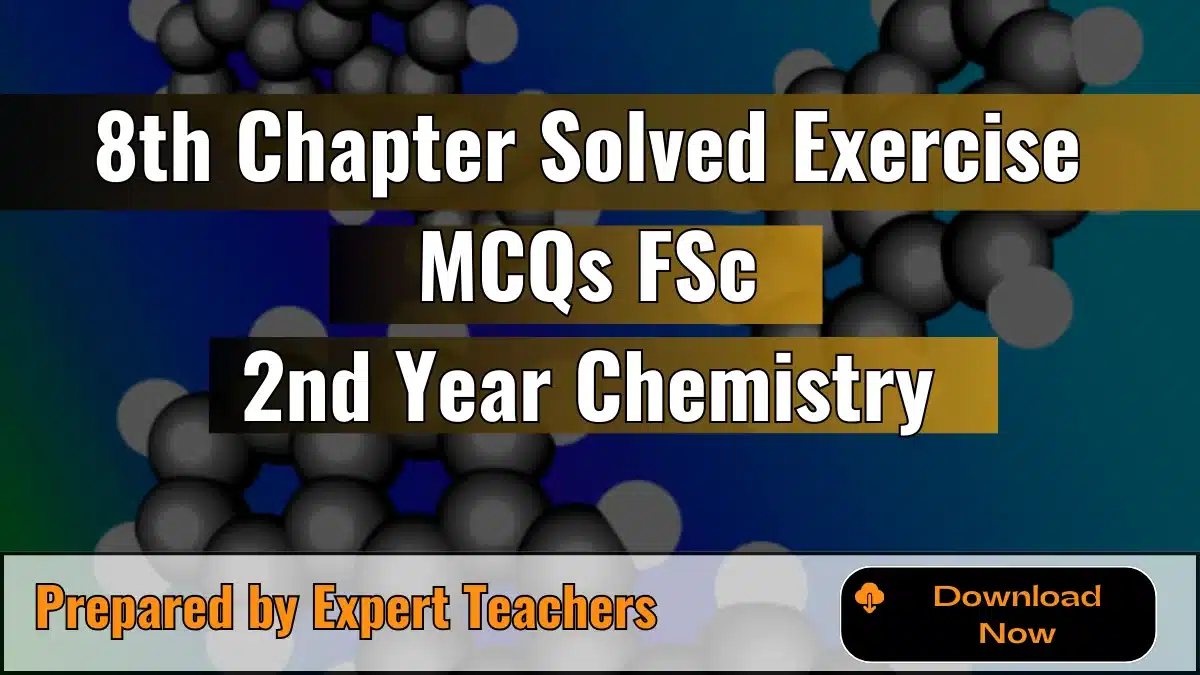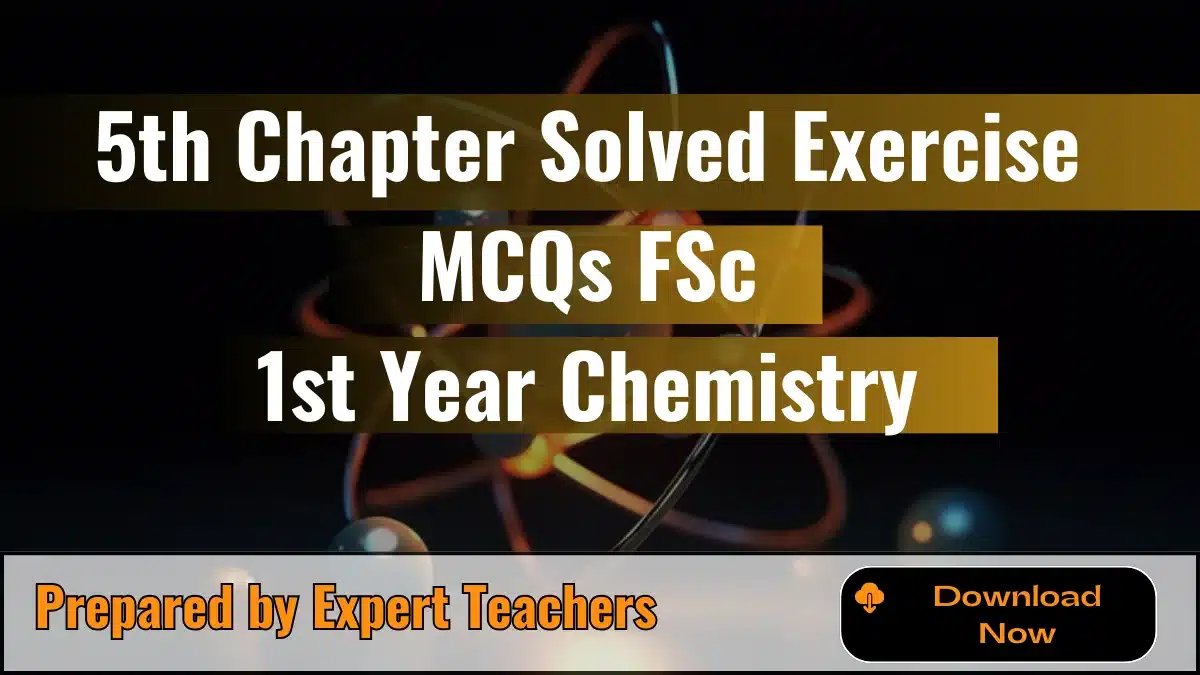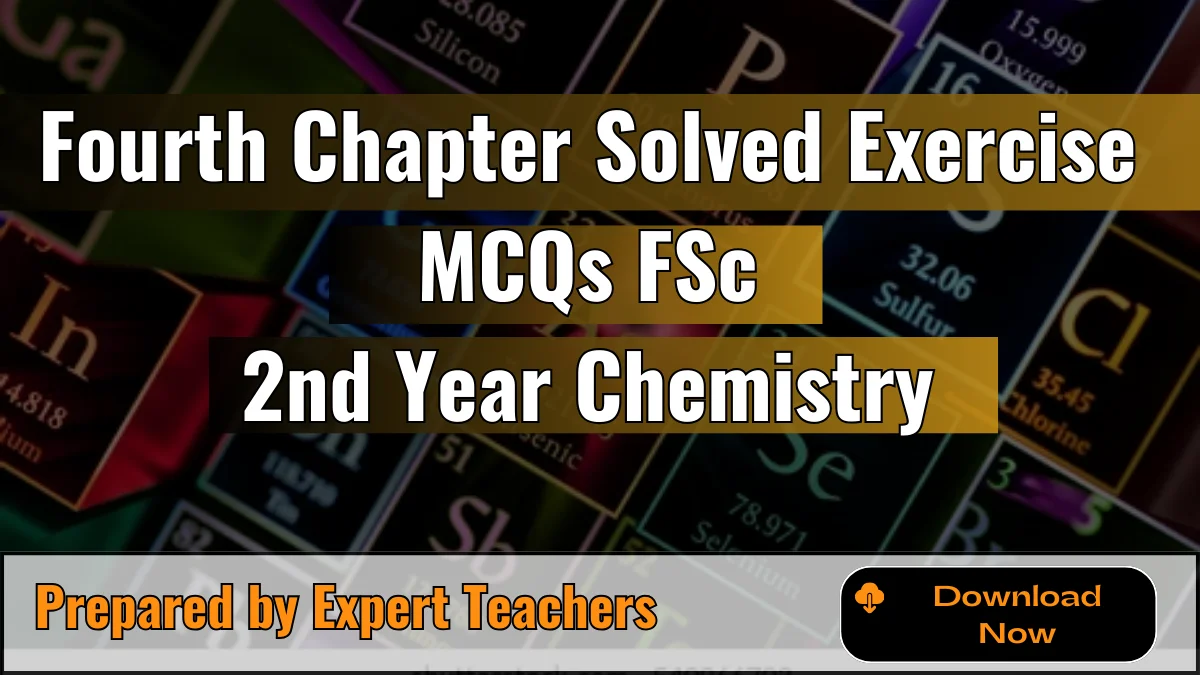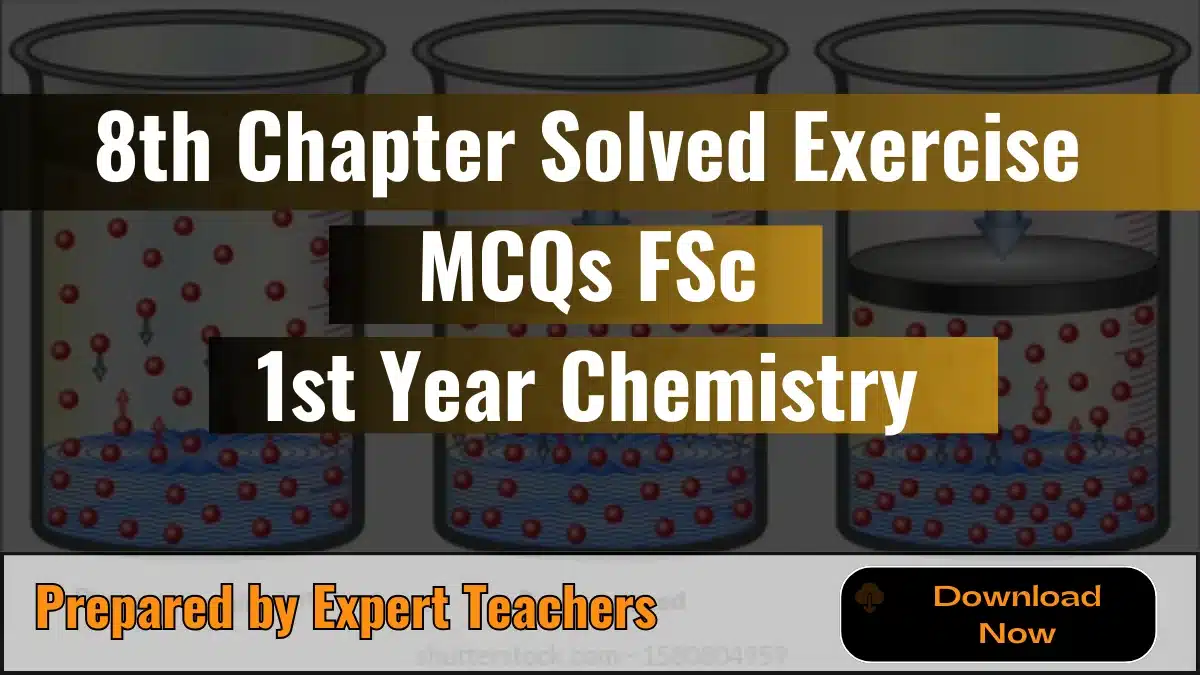12th Chapter Solved Exercise MCQs of FSC Second Year Chemistry
The 12th Chapter Solved Exercise MCQs of FSC 2nd-year Chemistry provides a complete set of solved multiple-choice questions (MCQs). Each MCQ comes with a brief explanation to help you understand the correct answer. These solutions are designed to support students in preparing for their exams, making complex concepts easier to grasp and ensuring a solid foundation for success.
12th chapter solved MCQs with explanation
1. The carbon atom of a carbonyl group is:
(a) sp hybridized
(b) sp² hybridized
(c) sp³ hybridized
(d) none of these
Explanation: Option (b) is correct. Because carbon atom in a carbonyl group (C=O) forms three bonds: one double bond with oxygen (which includes one sigma and one pi bond) and one single bond with another group. Sp² hybridization involves three orbitals that form sigma bonds and a separate p orbital for the pi bond.
2. Formalin is:
(a) 10% solution of formaldehyde in water
(b) 20% solution of formaldehyde in water
(c) 40% solution of formaldehyde in water
(d) 60% solution of formaldehyde in water
Explanation: Option (a) is correct. Because Formalin is a common aqueous solution of formaldehyde gas. It typically contains about 37-40% formaldehyde by weight, but it is usually diluted to a 10% solution for practical use. This concentration makes it suitable for preserving biological specimens and other applications.
3. Which of the following will have the highest boiling point?
(a) Methanal
(b) Ethanal
(c) Propanal
(d) 2-Hexanone
Explanation: Option (b) is correct. Because
4. Ketones are prepared by the oxidation of:
(a) Primary alcohol
(b) Secondary alcohol
(c) Tertiary alcohol
(d) all of these
Explanation: Option (b) is correct. Because when a secondary alcohol is oxidized, it loses two hydrogen atoms and forms a ketone. Primary alcohols, on the other hand, are oxidized to aldehydes and then further to carboxylic acids, while tertiary alcohols do not oxidize easily because they lack the hydrogen atom on the carbon bearing the hydroxyl group.
5. Acetone reacts with HCN to form a cyanohydrin. It is an example of:
(a) Electrophilic addition
(b) Electrophilic substitution
(c) Nucleophilic addition
(d) Nucleophilic substitution
Explanation: Option (c) is correct. Because in the reaction of acetone with HCN (hydrogen cyanide), the cyanide ion (CN⁻) acts as a nucleophile. It attacks the electrophilic carbonyl carbon of acetone (which is a ketone), resulting in the formation of a cyanohydrin. This process is a classic example of nucleophilic addition, where a nucleophile adds to the carbonyl group of the substrate.
6. Which of the following compounds will not give iodoform test on treatment with NaOH?
(a) Acetaldehyde
(b) Acetone
(c) Butanone
(d) 3-Pentanone
Explanation: Option (d) is correct. Because the iodoform test is used to identify compounds with the structure R-CHOH-CH₃ (where R is any alkyl or aryl group) or compounds with the structure R-CO-CH₃ (like acetone).
- Acetaldehyde (CH₃CHO) and Acetone (CH₃COCH₃) both have the CH₃-CO group and will give a positive iodoform test.
- Butanone (CH₃COC₂H₅) also has the CH₃-CO group and will give a positive iodoform test.
- 3-Pentanone (CH₃COC₃H₇) does not have the CH₃-CO group; instead, it has a longer alkyl chain. Therefore, it will not give a positive iodoform test.
7. Which of the following compounds will react with Tollen’s reagent?
(a) CH₃ – C – H
(b) CH₃ – C – CH₃
(c) CH₃ – C – OH
(d) CH₃ – C – CH₂ – CH₃
Explanation: Option (b) is correct. Because
8. Cannizzaro’s reaction is not given by:
(a) Formaldehyde
(b) Acetaldehyde
(c) Benzaldehyde
(d) Trimethylacetaldehyde
Explanation: Option (b) is correct. Because Cannizzaro’s reaction happens with aldehydes that don’t have alpha-hydrogens (e.g., formaldehyde, benzaldehyde). Acetaldehyde has alpha-hydrogens and doesn’t undergo Cannizzaro’s reaction; it usually undergoes aldol condensation instead.
9. Which of the following reagents will react with both aldehydes and ketones?
(a) Grignard reagent
(b) Tollen’s reagent
(c) Fehling’s reagent
(d) Benedict’s reagent
Explanation: Option (a) is correct. Because Grignard reagents (organo-magnesium compounds) react with both aldehydes and ketones. In these reactions, the Grignard reagent adds to the carbonyl group (C=O) of aldehydes and ketones to form alcohols.
- Tollen’s reagent reacts only with aldehydes, not ketones.
- Fehling’s reagent and Benedict’s reagent react with aldehydes but not with ketones.







Leave a Reply